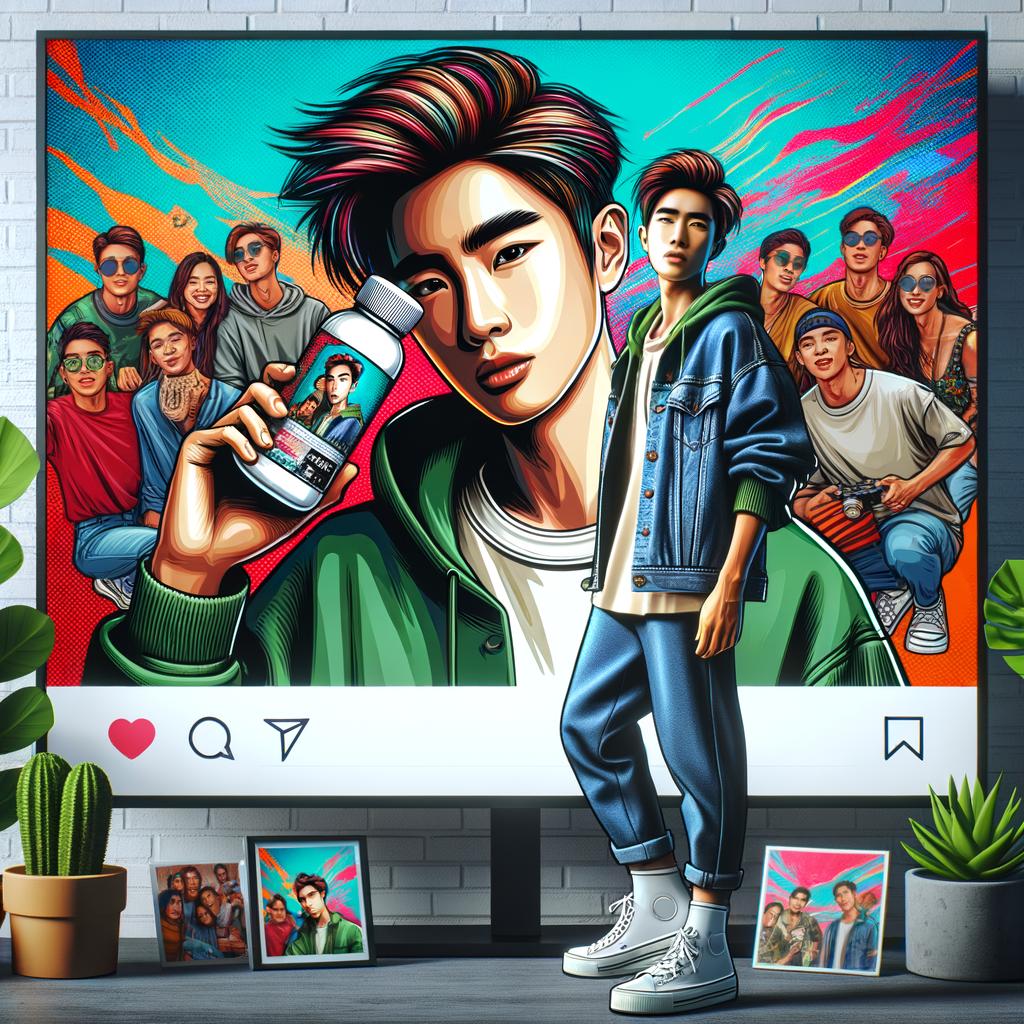Dominating Social Media Marketing Through Influencer Leverage

In the hyper-connected world we live in, Social Media Marketing (SMM) is taking the center stage like never before. Think about it. With an incredible rise in digital technology and the increasing use of social platforms, millions of potential consumers are just a click away. A new marketing paradigm has thus emerged, one that revolves around the fascinating influence wielded by social media influencers. So, who are these influencers, exactly? They're engaged, respected, and followed individuals who harness popular social platforms to shape opinion, ignite trends, and lend unprecedented credibility to brands. The potent combination of the huge follower bases and the trust that these influencers command can act as a catalyst, creating a highly effective boost to brand visibility. Businesses keen on capitalizing the opportunities present in the online sphere are actively incorporating influencer-aided strategies into their marketing arsenal. Through a comprehensive, step-by-step guide, this blog post explores the entire process of identifying the right influencers, forging fruitful alliances, and crafting compelling campaigns that captivate audiences. Are you ready to unearth the potential of social media marketing and master the art of influencer leverage? Let's dive in.
Identifying the Right Influencer for Your Brand

In order to fully utilize social media influencer marketing, pinpointing the right influencer for your brand remains a top priority. This goes beyond just looking at their follower count and overall popularity. In addition to these aspects, one must conduct extensive research into the influencer's target audience. A detailed analysis of the influencer’s audience demographics, interests, and engagement patterns is crucial. This step ensures that the influencer's audience aligns with your brand identity and target market, thus enhancing the chances of your marketing campaign's success.
When trying to align with an influencer, the first step needs to be identifying one that represents or lives the brand values you want to propagate. For instance, if your brand sells eco-friendly products, identifying an influencer who is vocal about sustainability and the environment could help in reaching the desired audience effectively. To determine this, you might dig into their past collaborations, personal interests, and public demeanor.
Also, it is crucial to note the platform where the influencer is most active and popular. For example, brands promoting visually appealing products, such as fashion or home décor, could likely benefit more from influencers who use Instagram or Pinterest. In contrast, those engaging in tech or business sectors might find Twitter or LinkedIn influencers more valuable.
In conclusion, identifying the right influencer isn't a one-size-fits-all process. A mixture of audience analysis, brand and influencer alignment, and platform-specific focus can guide brands toward the influencer who can best resonate with their image and objective. With the right influencer collaboration, the path to dominating social media marketing becomes clearer and more achievable.
How to Approach and Engage with Influencers
To effectively approach and engage with influencers, you must hone in on your communication and proposal strategies. The very first interaction can set the tone for the entire partnership, so it's vital to be respectful, professional, and honest. Remember, influencers receive numerous partnership requests daily, so yours must stand out. Perhaps, you can start by following them on their platforms, like their posts, and make meaningful comments. This way, when you reach out, you are not an unknown entity but someone who has shown a genuine interest in their content.
When reaching out to the influencer, be clear on what you can offer them. While some influencers work for monetary compensation, others seek for unique experiences or exclusive products. A company that has done this well is Daniel Wellington, who identified influencers that align with their minimalist design and offered them a free watch in exchange for a post on their platforms. Their approach created a win-win situation, placing their product right in the line of sight of their target audience.
Moreover, your initial proposal to the influencer must be thoughtful and personalized. Avoid generic scripts; instead tailor your message to suit each influencer. Highlight the aspects of their work that resonate with your brand or speak about the successful partnerships they’ve had in the past. A method, adopted by brands like AirBnB, is to offer the influencers an experience that aligns with their brand - such as a paid vacation in one of their properties - which the influencer can then authentically promote to their audience.
Finally, remember the importance of building relationships over transactions. Authentic engagement with influencers, the genuine appreciation of their work, and consistent communication can lead to long-term partnerships. Look at the flame-filled partnership of Taco Bell with Josh Peck, using his humor and reach to promote the fast-food brand. This relationship went far beyond one campaign, with Peck regularly involving Taco Bell in his content. After all, a good relationship with an influencer is like a seed. Nourish it, tend to it, and watch it grow into something fruitful for your brand.
Creating Effective Influencer Marketing Campaigns

Developing your influencer marketing campaigns begins with identifying your goals -- what do you want to achieve? Increased brand visibility, more followers, or perhaps an increase in sales? Clear objectives from the onset are critical for your success. To cite an example, if you plan to enhance your brand recognition, you may aim for an influencer with a large follower base, whose posts generate massive impressions or views.
The next step is choosing the right social media platform for your campaign. Each platform caters to a unique demographic and has its own set of advantages. For instance, product-focused brands often realize exceptional performance on Instagram, as it provides highly visual content. Magazine-type content for an educated and professionally inclined audience, however, may do better on LinkedIn.
Now that your goals are clear and the platform is chosen, it’s time to craft engaging content. This is where the influencer's creative input becomes invaluable. As they know their audience well, you can rely on them to deliver a compelling message that effectively promotes your brand. Take Daniel Wellington, for instance, a Swedish watch company that rose to fame using influencer-generated content. They provided influencers with a watch and a unique discount code, then allowed them creative freedom to promote the product in their style.
Remember, at the heart of a successful influencer marketing campaign is authenticity. Often, audiences are savvy and can tell when a content is inauthentic or forced. Thus, ensuring a natural integration of your brand into the influencer's style and message is imperative, like the successful collaboration between National Geographic and Airbnb that celebrated the solar eclipse with original stories centering around 'night' experiences offered by Airbnb in unique locations.
Lastly, and equally crucial, is the evaluation of your campaigns. Key metrics such as engagement rate, conversions, click-through rates, and return on investment must be used for constant campaign optimization. This makes the difference between an effective campaign and one that merely exists on the boundaries of success. As an example, the cosmetic brand Glossier built its entire company using influencer marketing and reduced cost per acquisition by tracking the right metrics and adjusting strategies accordingly.
The Role of Content in Influencer Partnerships
One of the cornerstones of fruitful influencer collaborations is the creation and projection of authentic, original content. Authenticity is essential as it lends credibility to both the influencer and the brand, while originality keeps audiences engaged and inclined towards repeat interactions. It is these faithful engagements that constitute a visible boost in a brand's visibility and credibility. Content that resounds with the influencer’s audience while simultaneously aligning with your brand identity enhances the potency of the partnership.
Take, for instance, Daniel Wellington’s partnership with influencers across the globe. The influencer would create unique content, capturing the watch in their everyday life with a promo code, which was simple yet hugely effective due to its authentic appeal.
This strategy leans heavily on understanding the influencer's target audience and ensuring there’s a significant overlap with your own. This alignment serves as a guarantee that the content created will cater responsively to the relevant audience’s preferences, contributing to the effectiveness of the marketing campaign. For example, a beauty brand partnering with a lifestyle influencer known for their skincare routine helps in seamless content integration, having already resonated with that influencer's audience.
Engaging content is paramount but so is the regularity and consistency of content dissemination. Deploying content at regular intervals keeps the audience hooked, thereby enhancing brand recall value. This was evident in Nykaa’s repeated collaborations with numerous beauty influencers, aiming for wider ongoing visibility rather than a one-time surge.
Finally, the quality and purposefulness of the content count significantly. Well-researched and informative content, or content offering some form of tangible value to viewers, can not just attract but also hold audience attention. A classic example of this can be seen within Intel's Inside partnership with Lady Gaga, creating content that marries technology with pop culture, imparting bruited about value while having substantial audience retention.
Overall, the role of content within an influencer partnership is pivotal to shaping a brand’s image and ultimately, the success of the marketing campaign.
Case Studies Highlighting Successful Influencer Leverage in Marketing
One exceptional instance of a brand harnessing influencer marketing is Daniel Wellington, a watch brand. Without any physical stores, they relied on Instagram influencers to create a strong digital presence. They sent their watches to strategically selected influencers who shared images of the merchandise with special discount codes. This successful outreach resulted in a surge of user-generated content along with increased brand engagement and sales.
Luxy Hair also serves as an excellent case study of influencer leverage. The brand invested heavily in YouTube influencers, who showcased Luxy Hair extensions in their beauty tutorials and tagged the brand. This approach drove targeted traffic to Luxy's YouTube channel and website, resulting in high engagement rates and sales.
Lord Jones, an upscale CBD brand, used influencer marketing to position itself in the wellness and lifestyle sectors. The brand reached out to wellness gurus and vloggers, who incorporated Lord Jones products in their routine, demonstrating and endorsing their usage. These authentic endorsements earned Lord Jones elevated credibility and high-profile followers.
The beauty and skincare industry has also masterfully capitalized on influencer marketing. Glossier, a cosmetics brand that started as a beauty blog, leveraged its established relationships with influencers to elevate its brand identity. Glossier unites with influencers who mirror their minimalist aesthetic, as they navigate beauty routines using Glossier products.
HiSmile, a teeth-whitening kit brand, launched a comprehensive campaign using different scale of influencers for maximum reach. They engaged mega influencers like Kylie Jenner alongside micro influencers, multiplying their exposure exponentially. A noteworthy result was a 10,000% ROI from a Kylie Jenner post, highlighting the potency of influencer marketing when well-conceived and well-executed.
Another noteworthy brand is Gymshark, a fitness apparel retailer. They cultivated long-lasting relationships with influencers who authentically resonated with their brand. These influencers created workout videos wearing Gymshark apparel, leading to high-impact visibility and direct conversions. This approach propelled Gymshark to one of the fastest-growing companies in the UK.
Managing Long-term Relationships with Influencers

Establishing bonds with influencers goes beyond a one-off campaign contribution. It must be seen as a strategic alliance, fostering a long-term relationship that brings mutual benefits. This starts with regular engagement, not just around product launches or specific marketing events, but making an effort to engage outside formal campaigns. Take the beauty brand Glossier, for instance. An on-going relationship with influential beauty YouTuber, Estée Lalonde, created exposure not just through promotion but also through natural engagement with the brand over time.
An influencer’s worth grows when their input is valued. Brands must hence actively recognize and appreciate their contributions, giving them a sense of prominence and ownership in the brand's journey. A case in point is Nike's partnership with basketball legend Michael Jordan. The relationship spanning decades resulted in iconic products loved by fans, reinforcing the long-term benefits of a nurtured influencer relationship.
But it's not just about the brand's benefit alone. Ensuring that influencers also find value in the relationship is equally necessary. Whether that’s in the form of product exclusives, early access or other incentives, it’s vital the relationship is mutually beneficial. For instance, the fashion brand Revolve regularly invites influencers to unique brand experiences, strengthening their bond with the influencers and providing compelling content for their followers.
Remember that managing relationships with influencers is an ongoing task. Regular check-ins, prompt communication, and appreciation of their efforts will keep the relationship favourable. Showcasing the value they bring to the brand can lead to a long-term alliance that benefits both the brand and the influencer alike.
